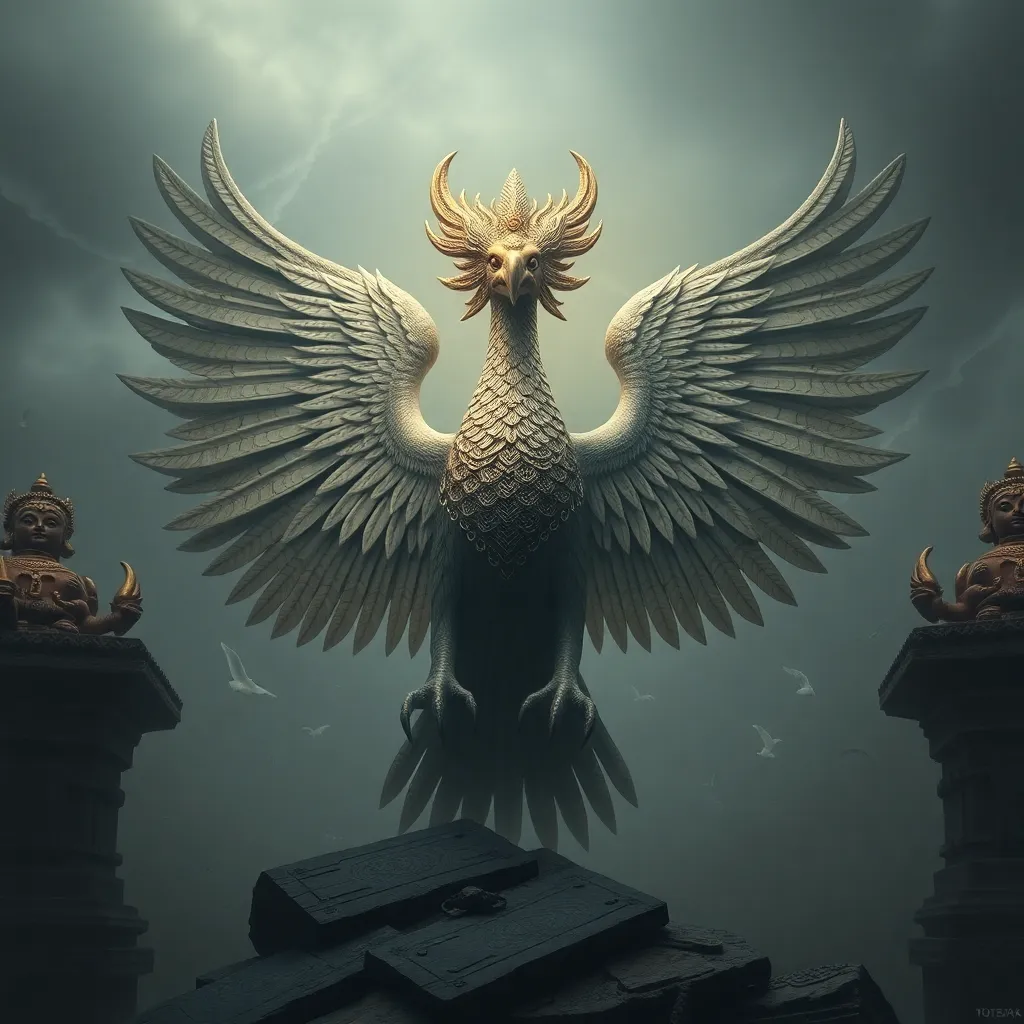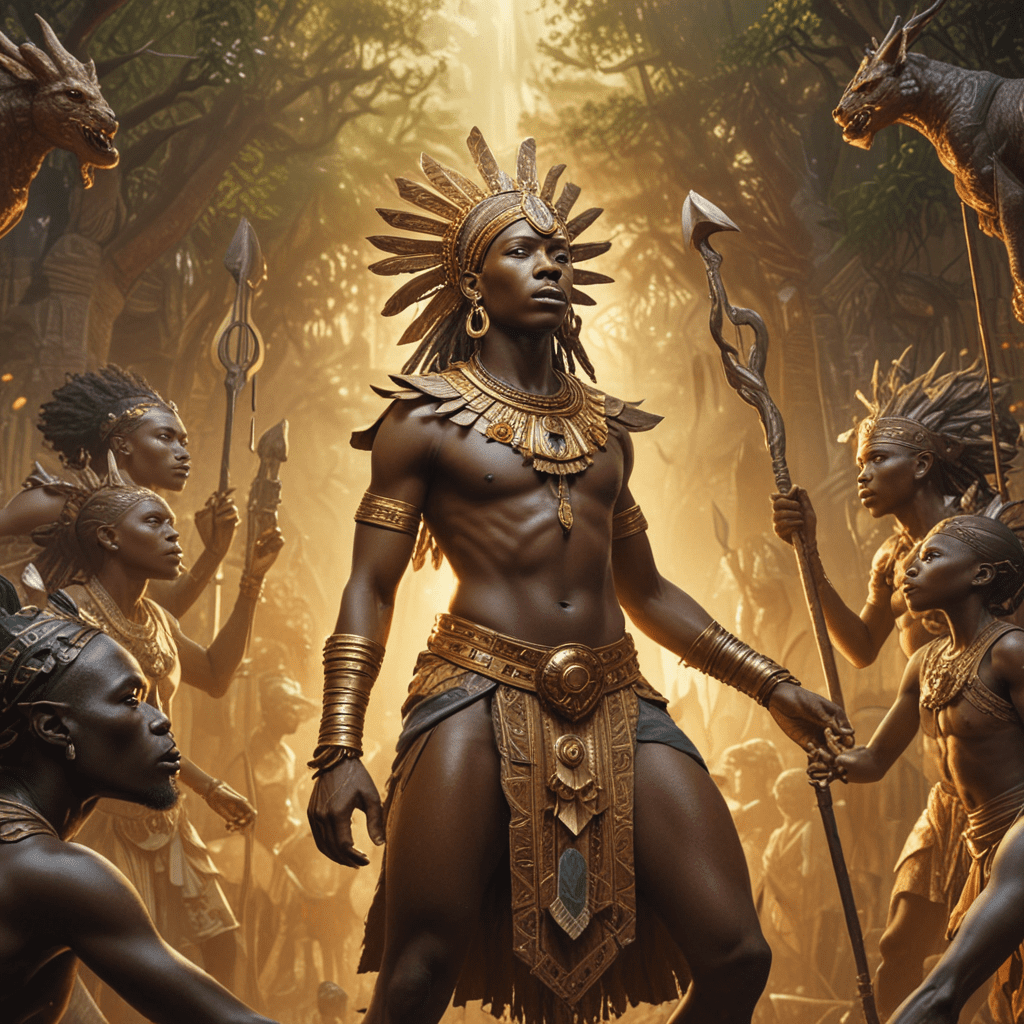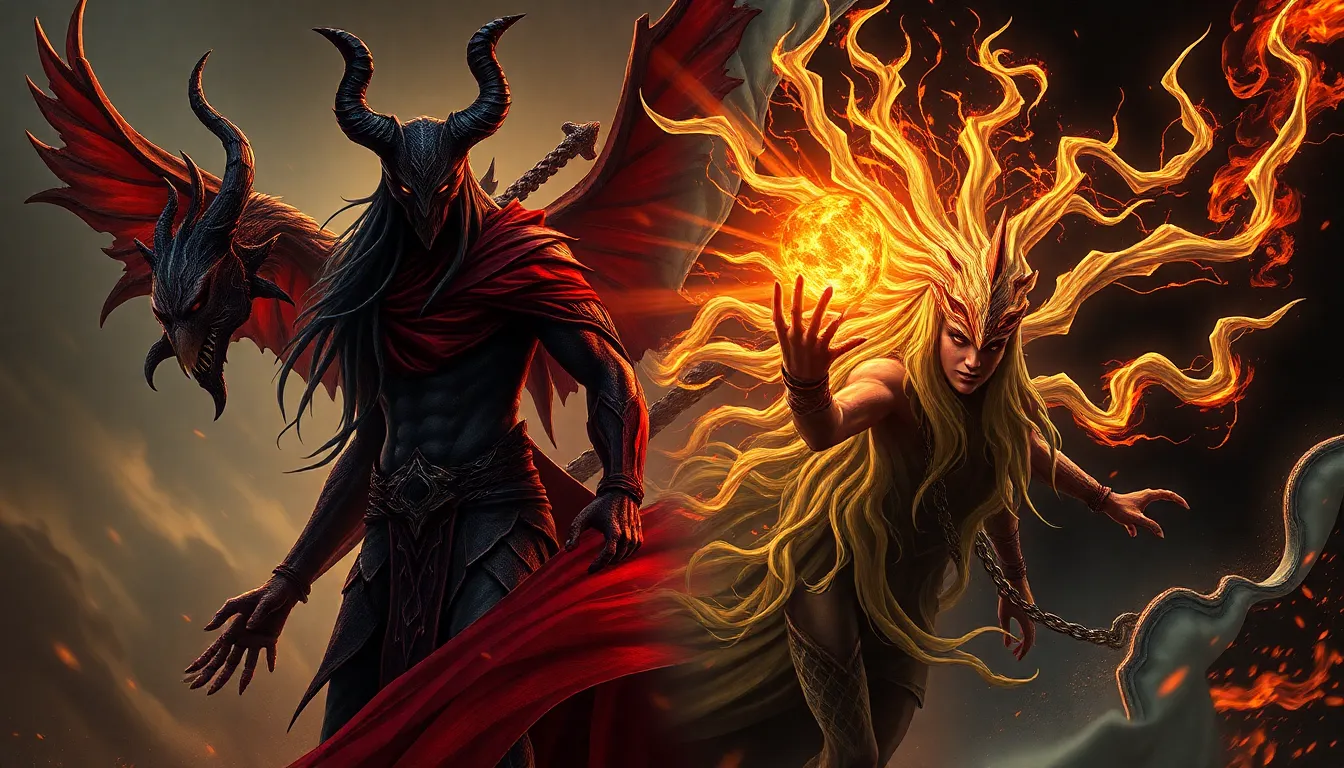From the Ramayana to the Mahabharata: Garuda’s Diverse Roles in Hindu Epics
I. Introduction
Garuda, a prominent figure in Hindu mythology, is revered as the king of birds and the vehicle of Lord Vishnu. His narrative spans various texts, from the ancient Vedas to the great epics, the Ramayana and the Mahabharata. Garuda’s multifaceted roles not only highlight his importance as a divine being but also reflect his symbolic significance in various contexts.
This article aims to explore the diverse roles of Garuda in the Hindu epics, focusing on his origins, his interactions with key characters, and the larger themes he embodies. By examining Garuda’s journey through the Ramayana and Mahabharata, we can gain insights into his significance within Hindu culture and spirituality.
II. Garuda’s Origin and Symbolism
A. Mythological background and lineage
According to Hindu mythology, Garuda is the son of the sage Kashyapa and Vinata, one of his two wives. His birth is enveloped in legend, marked by a rivalry between his mother and his half-sibling, the serpents (Nagas). Garuda’s fierce desire to liberate his mother from servitude to the Nagas is central to his character development.
B. Symbolism of Garuda as a divine vehicle and protector
Garuda symbolizes speed, martial prowess, and divine energy. He is often depicted as a large bird with a human-like torso, representing the duality of the physical and spiritual realms. As Vishnu’s mount, Garuda embodies the qualities of protection and power, serving as a guardian against evil forces.
C. Cultural significance and interpretations across regions
Across various cultures in India and Southeast Asia, Garuda is associated with guardianship and strength. In Indonesia, for instance, he is a national symbol, representing independence and freedom. His image is prevalent in temples, art, and folklore, signifying his universal appeal and cultural importance.
III. Garuda in the Ramayana
A. Introduction to Garuda’s role in the Ramayana
In the Ramayana, Garuda plays a crucial role, particularly in the context of Lord Rama’s quest to rescue Sita from the demon king Ravana. His loyalty and strength are highlighted in various episodes, reinforcing his status as a protector of dharma (righteousness).
B. Key episodes featuring Garuda, including his interactions with Lord Rama
- Garuda’s encounter with Jatayu: The noble eagle who fights Ravana and falls in battle. Garuda mourns his fallen ally, showcasing his compassion.
- Garuda’s assistance to Rama: He provides essential information regarding Sita’s abduction and offers guidance, exemplifying his role as a divine messenger.
C. Garuda’s significance in the battle against Ravana
During the epic battle against Ravana, Garuda serves as a symbol of unwavering loyalty and bravery. His presence instills hope and courage in the hearts of Rama and his allies, emphasizing the themes of righteousness and the triumph of good over evil.
IV. Garuda in the Mahabharata
A. Overview of Garuda’s appearances in the Mahabharata
In the Mahabharata, Garuda is depicted as a powerful ally of the Pandavas, particularly Arjuna. His appearances are interwoven with the narratives of divine intervention and guidance, underpinning the importance of dharma in the epic.
B. Relationships with key characters such as Arjuna and Krishna
- Garuda’s bond with Arjuna: Garuda is often seen as Arjuna’s protector, aiding him in battles and imparting wisdom.
- Garuda and Krishna: Their interactions highlight themes of friendship and divine purpose, showcasing how Garuda supports Krishna’s endeavors in the war.
C. Role in pivotal events, including the Kurukshetra War
During the Kurukshetra War, Garuda’s presence is felt as a harbinger of victory for the Pandavas. His symbolic role as a divine bird signifies the overarching theme of righteousness prevailing against adharma (unrighteousness) throughout the conflict.
V. Garuda as a Symbol of Dharma
A. Analysis of Garuda’s embodiment of righteousness and justice
Garuda represents the ideals of righteousness, justice, and loyalty. His actions in both the Ramayana and Mahabharata illustrate a steadfast commitment to dharma, inspiring characters and devotees alike to uphold these values.
B. Comparisons between his roles in the Ramayana and Mahabharata
While Garuda’s role evolves between the two epics, his core essence remains constant. In the Ramayana, he is a protector and guide, whereas in the Mahabharata, he emerges as a fierce ally and a symbol of divine justice.
C. Lessons drawn from Garuda’s actions and decisions
Garuda’s story imparts vital lessons about loyalty, courage, and the importance of standing against injustice. He teaches us that true strength lies not just in physical power but also in moral integrity and the pursuit of righteousness.
VI. Cultural Representations of Garuda
A. Artistic portrayals in literature, sculpture, and dance
Garuda’s image is prominently featured in various art forms, from traditional sculptures to classical dance performances. Artists often depict him in dynamic poses, symbolizing his agility and strength.
B. Influence on religious practices and worship
Garuda is worshipped in numerous temples across India, with devotees seeking his blessings for protection and strength. Many rituals involve chanting his mantras, invoking his presence and guidance in spiritual endeavors.
C. Garuda’s presence in contemporary culture and media
In contemporary culture, Garuda’s influence extends to films, literature, and popular media. His character often embodies themes of heroism and protection, resonating with modern audiences seeking inspiration from mythological figures.
VII. Cross-Cultural Comparisons
A. Garuda’s parallels in other mythologies and religions
Garuda finds parallels in various mythologies, such as the Greek Pegasus and the Egyptian falcon god Horus. These beings share attributes of strength and divine connection, highlighting common themes in human storytelling.
B. Examination of shared themes and differences
While Garuda embodies unique characteristics within Hinduism, the themes of guardianship and divine intervention are universal. These shared motifs reflect the intrinsic human values of protection and justice across cultures.
C. The global influence of Garuda’s narrative
The narrative of Garuda transcends geographical boundaries, influencing cultures in Southeast Asia, where he is celebrated as a symbol of power and freedom, exemplifying the global impact of his mythology.
VIII. Conclusion
A. Recap of Garuda’s diverse roles across Hindu epics
Garuda’s journey through the Ramayana and Mahabharata exemplifies his multifaceted roles as a protector, guide, and embodiment of dharma. His interactions with key figures in both epics highlight his significance in upholding righteousness.
B. Reflection on the enduring legacy of Garuda in Hindu culture
The legacy of Garuda continues to resonate in contemporary Hindu culture, where he is revered not only as a mythical figure but also as a symbol of strength and justice, inspiring generations.
C. Final thoughts on the significance of mythological figures in understanding human values and beliefs
Mythological figures like Garuda serve as mirrors reflecting the values and beliefs of society. They teach us about the importance of courage, loyalty, and the eternal struggle between good and evil, enriching our understanding of human nature and spirituality.




